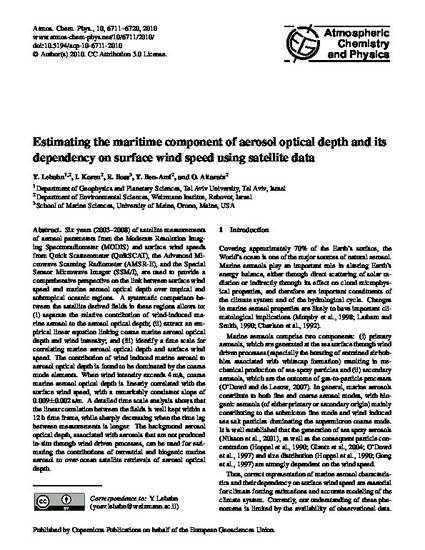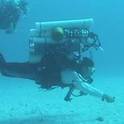
Six years (2003-2008) of satellite measurements of aerosol parameters from the Moderate Resolution Imaging Spectroradiometer (MODIS) and surface wind speeds from Quick Scatterometer (QuikSCAT), the Advanced Microwave Scanning Radiometer (AMSR-E), and the Special Sensor Microwave Imager (SSM/I), are used to provide a comprehensive perspective on the link between surface wind speed and marine aerosol optical depth over tropical and subtropical oceanic regions. A systematic comparison between the satellite derived fields in these regions allows to: (i) separate the relative contribution of wind-induced marine aerosol to the aerosol optical depth; (ii) extract an empirical linear equation linking coarse marine aerosol optical depth and wind intensity; and (iii) identify a time scale for correlating marine aerosol optical depth and surface wind speed. The contribution of wind induced marine aerosol to aerosol optical depth is found to be dominated by the coarse mode elements. When wind intensity exceeds 4 m/s, coarse marine aerosol optical depth is linearly correlated with the surface wind speed, with a remarkably consistent slope of 0.009±0.002 s/m. A detailed time scale analysis shows that the linear correlation between the fields is well kept within a 12 h time frame, while sharply decreasing when the time lag between measurements is longer. The background aerosol optical depth, associated with aerosols that are not produced in-situ through wind driven processes, can be used for estimating the contributions of terrestrial and biogenic marine aerosol to over-ocean satellite retrievals of aerosol optical depth.
Available at: http://works.bepress.com/emmanuel_boss/40/
